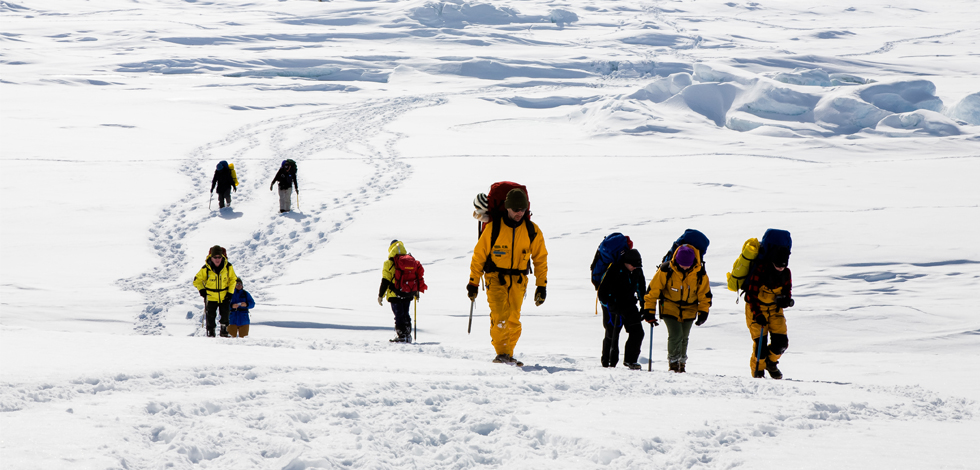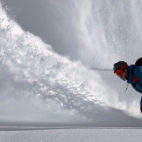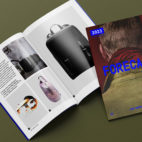Kitting out Expeditioners in Antarctica
Antarctica is one gnarly place; not only is it as cold as all blizzard, but it’s dry like a desert. Its nasty combo of freezing sub-temperatures and lip-breaking dryness is something that has kept the vast majority of the human populous away from such a place. But spotted amongst the endless plains of ice and snow are red-colored stations that read: The Australian Antarctic Division (AAD). Inside these stations are scientists, eagerly studying the great white beast and flying the flag as the leaders in Antarctic science and environmental management. But what gear is used to brave the cold? And who dishes it out?
We spoke to Roger Knowles, the Supply Services Manager for the AAD, and we quizzed him about their gear and the chilling environment they work in…
–
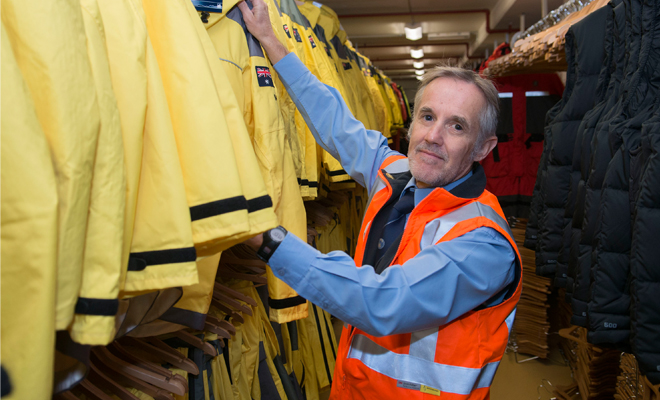 (Roger Knowles in the clothing store at the Australian Antarctic Division, Kingston Tasmania © Glenn Jacobson)
(Roger Knowles in the clothing store at the Australian Antarctic Division, Kingston Tasmania © Glenn Jacobson)
How different is gear for Antarctica compared to say Everest?
The gear used in Antarctica is very different to equipment used on Everest. The Australian Antarctic Division (AAD) supplies equipment for its durability and longevity rather than lightweight characteristics. The gear can be considered industrial, not expedition minimalist.
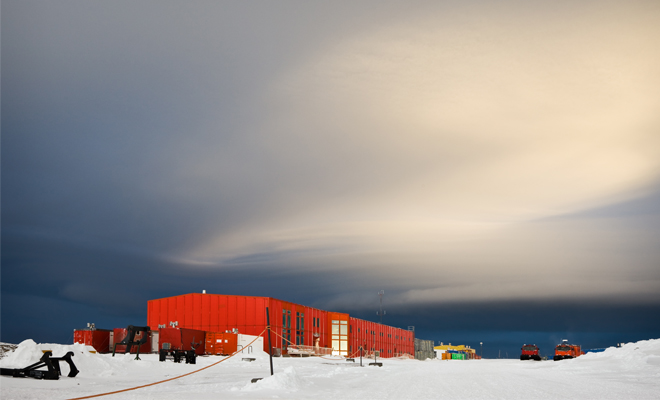 (Living quarters, Casey © Ian Phillips/Australian Antarctic Division)
(Living quarters, Casey © Ian Phillips/Australian Antarctic Division)
Does Antarctica being a desert change anything in gear selection?
Antarctica being classified as a desert does not change gear selection. In fact many mountainous areas are also deserts including Mt Everest, the Andes, Pamirs, Hindu Kush Karakoram and the Himalaya.
 (Mawson vicinity, Antarctica © Justin Chambers/Australian Antarctic Division)
(Mawson vicinity, Antarctica © Justin Chambers/Australian Antarctic Division)
Is cold the killer for gear? Or ice? Or those big snow-tracked vehicles that look like the Mars Rover’s evil cousin?
The biggest issue for us is heavy wear and tear on the gear through everyday use, which is just living and working around station. There are doctors, electricians, plumbers, builders, chefs and mechanics on station, so the gear gets used in a variety of settings including workshops, as well as outside in the elements. Our equipment looks like regular shell gear, but is industrial in design and materials.
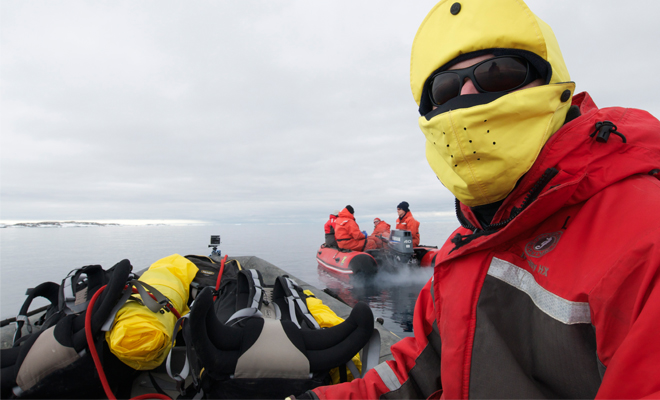 (Expeditioners at Casey station – boating © Jessica Fitzpatrick/Australian Antarctic Division)
(Expeditioners at Casey station – boating © Jessica Fitzpatrick/Australian Antarctic Division)
What goes wrong with gear the most often?
No company makes gear specifically for Antarctica, so we get most of our outer equipment custom made. The clothing is designed and tested by our kitting group and made by various manufacturers. The AAD also ensures all the gear issued has been through a formal test and trial process in the sub Antarctic or Antarctic environment, so there are generally not a lot of problems. Each season we do have some minor issues, such as zips breaking or damage through wear and tear, but there are stocks of replacement clothing on station to cover these eventualities.
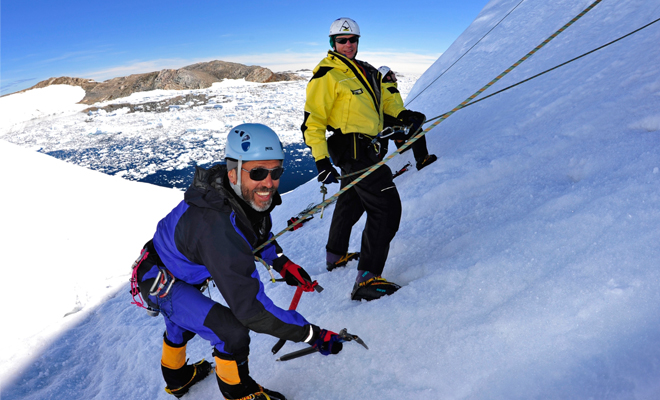 (Search and Rescue (SAR) training, Casey station, Antarctica © Todor Iolovski/Australian Antarctic Division)
(Search and Rescue (SAR) training, Casey station, Antarctica © Todor Iolovski/Australian Antarctic Division)
How much can people pick and choose their gear, versus you just issuing it?
There is a lot of planning that goes into developing a fit for purpose set of extreme cold weather clothing. The range and type of gear expeditioners receive is determined by our operations and planning team in consultation with project and program leaders. It depends on what activities are undertaken, for how long and in what environment. We have 30 different templates for the various jobs expeditioners undertake such as summer science, winter trades, summer trades, deep field science, aircrew, station support etc., as not everybody requires the same gear or the same level of gear. For example, a scientist carrying a down jacket will get a lightweight one, whilst a mechanic wearing a down jacket around a workshop or out in a bulldozer will get a more industrial style.
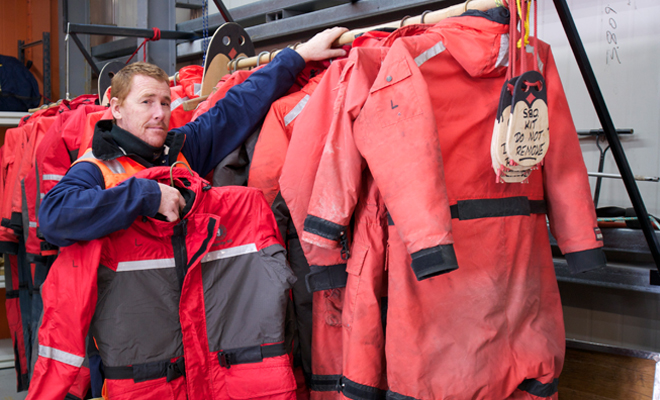 (Field Training Officer (FTO), Christian Gallagher in Casey station’s field store © Jessica Fitzpatrick/Australian Antarctic Division IA15407 Clothing store, AAD HQ Kingston, Tasmania, Australia)
(Field Training Officer (FTO), Christian Gallagher in Casey station’s field store © Jessica Fitzpatrick/Australian Antarctic Division IA15407 Clothing store, AAD HQ Kingston, Tasmania, Australia)
Do folks hand back the gear at the end of the trip?
Expeditioners keep any gear that is worn next to the skin, while all outer layer equipment is returned.
Do you check in post season and see how the issued gear has been hacked or modified?
All ‘returnable’ equipment is inspected, laundered and/or repaired prior to reissue to ensure it remains fit for purpose.
How much of the gear folks carry is for their work, versus for incase something goes wrong?
Each expeditioner has a survival kit bag which contains the minimum gear required in an emergency. This includes balaclava, goggles, socks, boots, boot chains, thermals, fleece layer and shell gear. This kit has to be carried or worn in all off-station activities and during flights or land transportation.
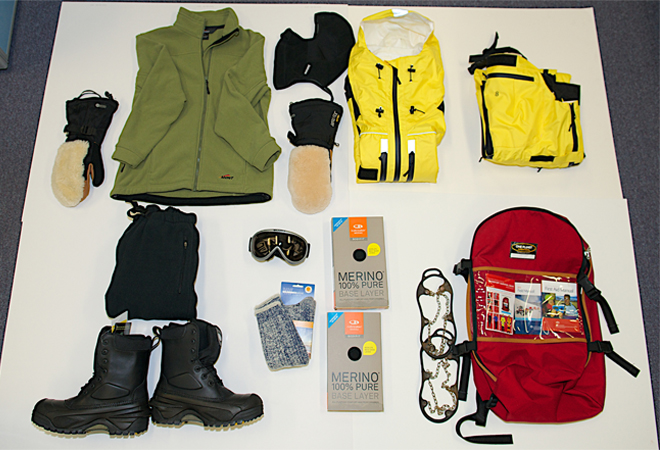 (© Australian Antarctic Division)
(© Australian Antarctic Division)
What are the carry brands you guys love? Who is making great gear for Antarctica?
The AAD has engaged contractors to manufacture extreme cold weather gear that meets our unique requirements. The AAD doesn’t trend to brand names, but rather focuses on the product itself. Additionally we do not issue any gear that hasn’t been through a formal test and trial process in Antarctica.
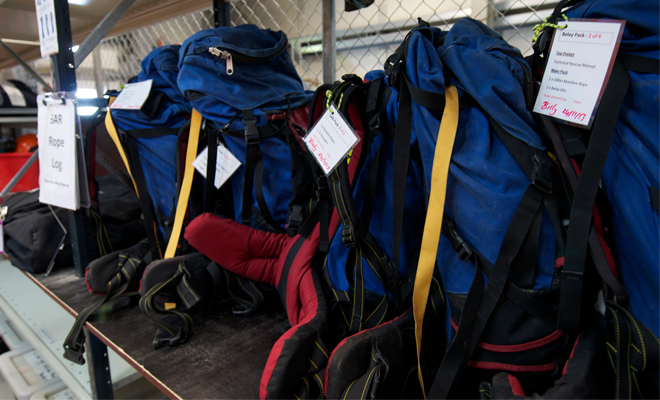 (SAR Packs, Casey station, Antarctica © Jessica Fitzpatrick/Australian Antarctic Division)
(SAR Packs, Casey station, Antarctica © Jessica Fitzpatrick/Australian Antarctic Division)
How tight are your budget constraints for the gear you select? Can you afford top-end in everything?
It’s a balancing act; to provide the best available gear but within a budget. We have a Clothing Advisory Committee which considers what’s the most suitable gear as well as the most effective use of current resources. We also have to consider the usage of the equipment.
For example, we issue walking boots for our expeditioners on the sub Antarctic Macquarie Island. We need a fit for ordinary people, not just seasoned bush walkers. So we offer a soft mid-range boot rather than a top-of-the-range boot that requires wearing in. Also we need the boot to last the entire summer season or a year, so we don’t invest in a boot that might have a 10-year lifespan.
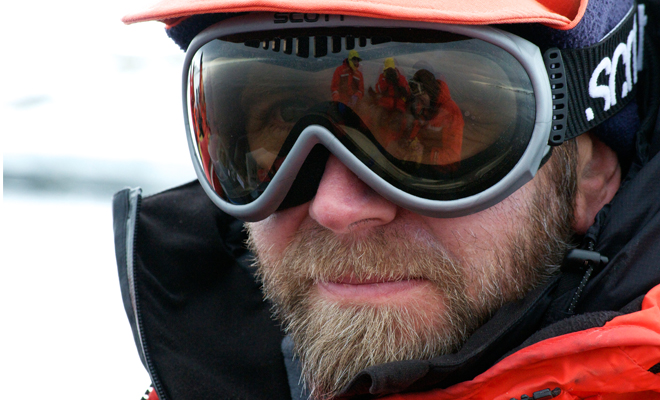 (Casey’s summer 2013/14 Station Leader, Anthony Hull © Jessica Fitzpatrick/Australian Antarctic Division)
(Casey’s summer 2013/14 Station Leader, Anthony Hull © Jessica Fitzpatrick/Australian Antarctic Division)
Do you get to go over there and experience the gear in that environment?
All the equipment issued by the AAD is trialed and tested on a regular basis by us in the sub Antarctic and Antarctic environments.
Can you give us the top things you look for in carry gear for Antarctica?
Usability: for example, our survival packs are designed to specific dimensions. They fit 17 items in them and can easily be stored in ships’ lockers and aircraft overhead lockers.
Color: is used as a way to identify gear usage, for example Antarctic shell gear is yellow and black, sub Antarctic shell gear is yellow and silver. This is an important bio security measure as it means we do not send gear to the wrong place and inadvertently transfer seeds or plant diseases.
Cut: to fit a range of people. Outdoor gear is usually designed for athletic outdoor people, but expeditioners are often not. We have to kit a variety of shapes and sizes. We also work hard to ensure women get well-fitted clothing and not just unisex gear.
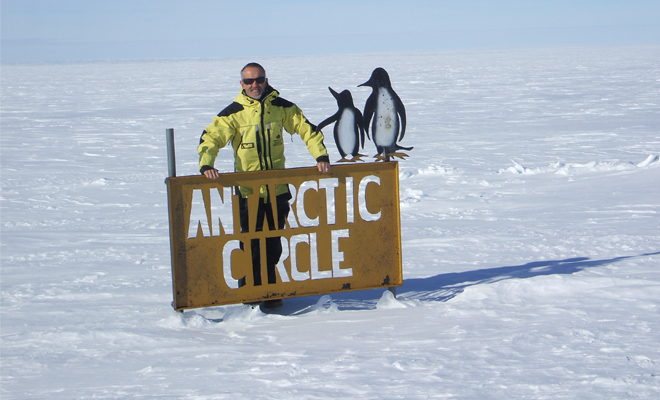 (Roger Knowles in Antarctica © Australian Antarctic Division)
(Roger Knowles in Antarctica © Australian Antarctic Division)
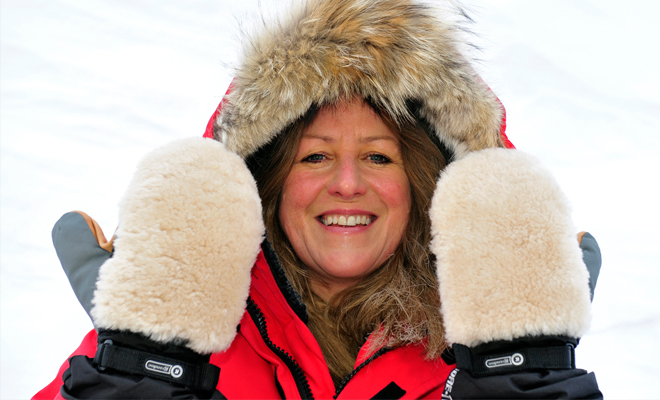 (Davis station leader Narelle Campbell © Todor Iolovski/Australian Antarctic Division)
(Davis station leader Narelle Campbell © Todor Iolovski/Australian Antarctic Division)
Are there times of year when no-one is in Antarctica?
Australia’s three stations, Casey, Davis and Mawson, as well as sub Antarctic Macquarie Island are open year round. In summer there are about 100 people on station, in winter only about 20.
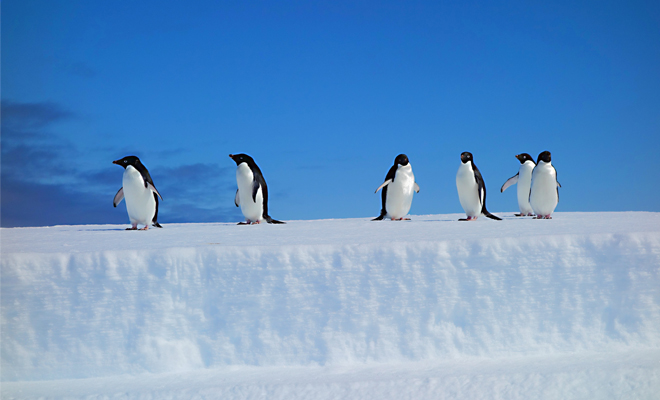 (Adelie penguins, Robinson Ridge, Antarctica © Tony Fleming/Australian Antarctic Division)
(Adelie penguins, Robinson Ridge, Antarctica © Tony Fleming/Australian Antarctic Division)
For readers wanting to understand how radical the Antarctic environment is, can you recommend any videos, images or resources?
The best place to start is the AAD’s website, where there is heaps of great information and videos on our work in the region.
Do you also have to think about gear for the crossing? Those seas are slightly radical down there…
The general issue clothing is very suitable for use during a ship or air travel or an emergency survival situation. During the voyage to Antarctica, which can take up to 2 weeks, there are regular emergency muster drills where expeditioners are required to wear their entire survival kit.
–
(*Feature image: Field party at Casey station, Antarctica © Ian Phillips/Australian Antarctic Division)





 Carry Awards
Carry Awards Insights
Insights Liking
Liking Projects
Projects Interviews
Interviews
